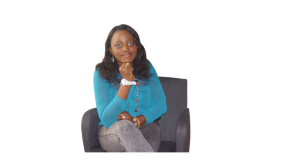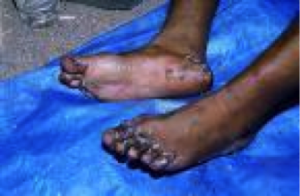Hypoglycemia. (Low Blood Sugar)
This condition occurs when the glucose in the blood falls below 2.8-3.0 mmol/l, the target level for Fasting Blood Sugar (FBS) is between 3.8-6mmol/l, and the level 2 hour after eating should be a little less than 8.3mmol/l. The target random blood sugar is 5-7.2mmol/l
So this actually means that Mrs Kolade had a good FBS that morning however she committed a major mistake, in skipping breakfast.
Risks Factors for Hypoglycemia
- Patients taking glucose lowering drugs without eating .
- Imbalance between Insulin / pill intake and food intake
- Physically exerting exercise.
- Misguided insulin intake or drug therapy
- Alcohol Intake
Features
- Increased heart rate
- Cold sweat
- Headache
- A strong sense of hunger
- Tremors
- Nightmares
- Dizziness
- Confusion
- Irritation
- Blurred Vision
- Loss of consciousness
What to do at the onset of Hypoglycemia
First, Place a cube of sugar in your mouth, or drink a cup of any sweet drink as soon as possible.
- Withhold the intake of insulin or drugs
- Consult your doctor immediately
DM Foot Ulcers
This occurs when a diabetic develops a sore on the foot and it doesn’t heal after many weeks or month.
Risk Factors for DM Foot Ulcers
Uncontrolled or poorly controlled blood glucose
Long standing DM
People with foot deformities
Elderly patients
Patients who walk bare footed
Blind patients ( because they tend to hit their feet more often)
Signs of an impending ulcer
- When one feels a tingling feeling or loss of sensation on the leg, foot or toes, like shoes coming off without noticing it.
- When one notices that the skin around the leg are getting very dark, losing hair, shiny or scaly skin on the leg.
- When one feels pain while walking, that gets worse when you take a rest
- When one notices shoes are falling off without noticing
- When the nails on the toes are getting thicker and raised
- When the foot feels very warm or cold to touch
- When blisters begins to appear on the skin of one’s leg
- Loss of balance while walking in the dark
- A feeling of walking on wool
- Burning sensation on the feet
How To Prevent DM Foot Ulcers
- Ensure compliance to our prescribed drugs and intake schedule
- Avoid wearing tight shoes or high shoes that press the toes together
- Buy shoes that are one size larger than your normal size.
- Avoid walking bare-footed
- Wash your foot and keep them well lubricated to avoid extreme dryness
- Avoid nail cutters to trim your nail, Use a nail file instead.
- Avoid alcohol and cigarette.
- Avoid cramped seats when travelling on a long distance journey.
Diabetic Ketoacidosis
It is an emergency situation caused by an interruption of one’s drugs or insulin intake, or an infection, it is characterized by
Increased thirst
Nausea and vomiting
Blurred vision
Abdominal pain
Weakness
Drowsiness
Loss of consciousness
In such an event , report to the hospital immediately.
Other complications are
- Short sightedness, Glaucoma one notices that he or she can’t wash a plate clean, or begins to experience heaviness/itchiness in the eyes
- Urinary retention, renal failure, heart failure.
- Diarrhea ( which is worse at night)
- Impotence
- Loss of libido
You can see that we can save ourselves a lot of direct and indirect cost if we choose to make use of this information. To prevent these complications, we need to conduct some routine investigations
1 Random Blood Sugar (RBS): This can be done at any time of the day, usually about when one is about to take a dose of insulin/drug. The target blood sugar is 5- 7.2mmol/l.
2 Fasting Blood Sugar (FBS): Is a blood glucose level check done before eating the first meal in the morning, usually at 6.am.
3 Four-Point Blood Sugar Monitoring: Involves an FBS check in the morning, an RBS before lunch, another RS after lunch and finally an RBS, two hours before dinner .
4 Urinalysis: It is done once in every 3 months to detect the presence of glucose and protein in the urine.
5 Glycated Hemoglobin Check: This is done every two months. This test is strictly dependent on the decision of your doctor.
6 Fundoscopy: To check out for the complication affecting the eyes.
7 Blood Pressure Check: done during every clinic visit.
It is advisable to personally own a glucometer whose strips are readily available, e.g Accu-Check, Fine-Test, One Touch, On Call Plus, and On Call Red.
Common Diabetic Drugs
Due to the
Diabetic drugs are prescribed based on the type of diabetes. I.e. either Type 1 or Type 2, if one is obese, if one has a kidney or liver problem. As a result of this, it is totally unwise to share drugs with a fellow diabetic patient. Comply with your drugs and ensure you are aware of the actual reason why it is prescribed to you.
Common drugs (pharmaceutical names) and their brand names
- Glibenclamide– Gliben J, Diaonil , Cladil , Glanil, Diatab, Guben, Glyboral
- Metformin– Panfor, Synformin, Formetab, Zomet, Glucophage, Mephage, Glucovance, Betaphage, Diabetmin, Diamet, Juformin
- Chlorpropamide – Diabenese , Clopinese
- Mulivitamins– Mormordic, Alphabetic
Diabetic drugs should be procured with regards to doctor’s prescription, availability, and accessibility and acceptability, I took the pain of getting the names of the available brands sold in major pharmacies so that you can demand for the right alternative when you run out of a particular brand . You really don’t have to stick with a particular brand name, just ensure that the drugs are under the same group. Trust me , I have seen a lot of patients travel long distances just to procure a particular drug, when they could have simply helped themselves with a similar, equally effective brand.
There is so much to learn about DM but much more to do with regards to DM and its complications.but the important thing is to make use of the information, in helping identifying people around us who may be undiagnosed, ensuring that diagnosed patients are taking adequate care of their condition so as to live a quality life and also helping to prevent the onset of DM in high risk people. Its all about you and your health.
YOU CAN READ THE 1ST PART BY CLICKING DIABETES HERE
You can contact Dr. Adesola Ajiboye through adesola.ajiboye@gmail.com


